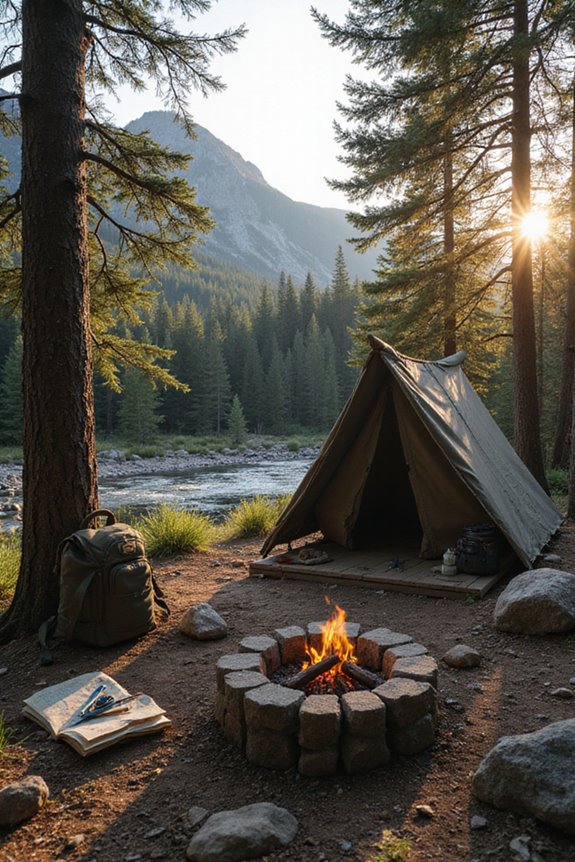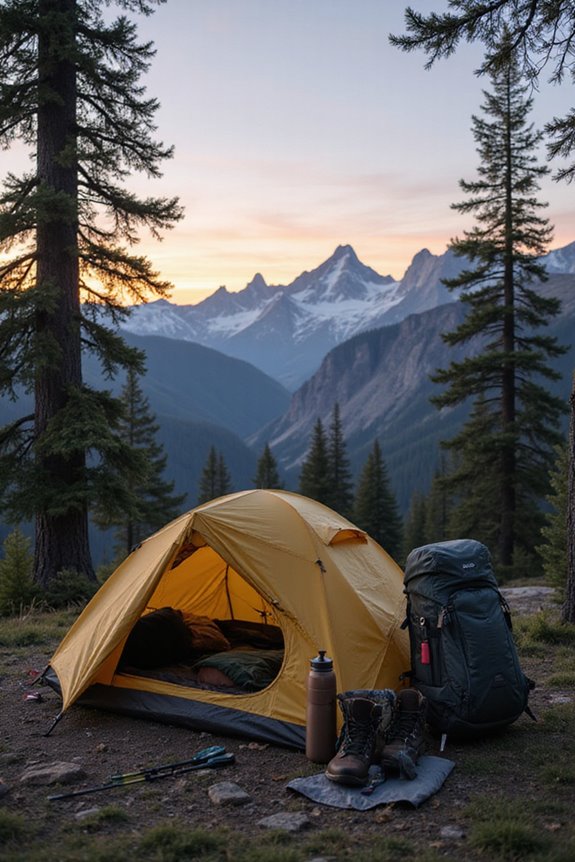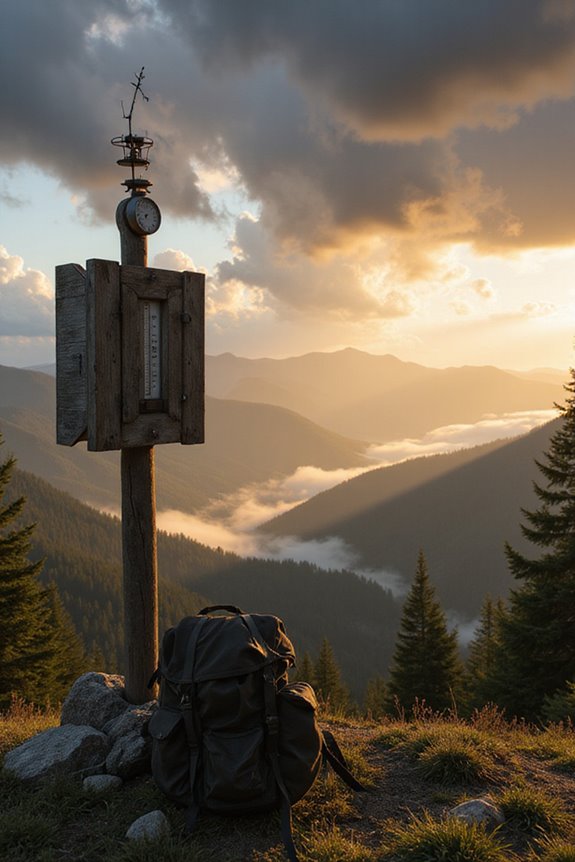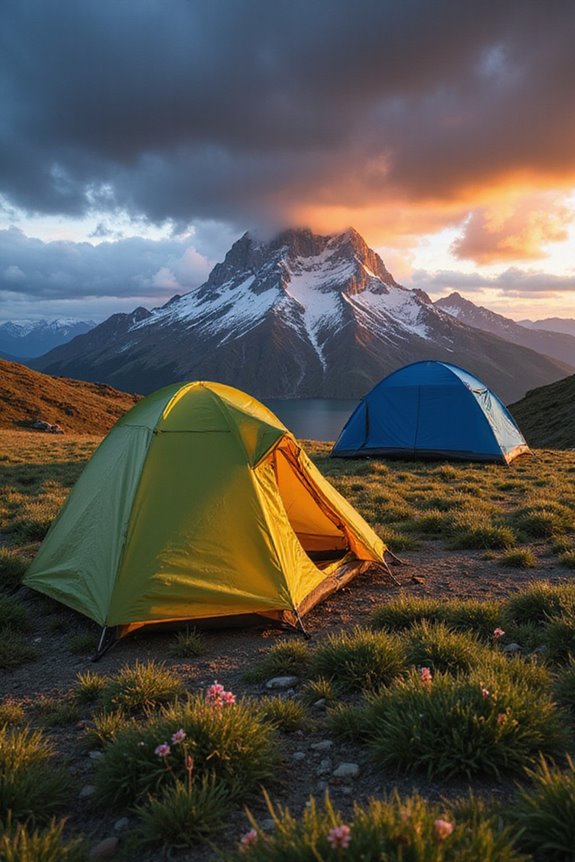So, the basics of outdoor survival? It’s all about being prepared! You’ve got to pack your emergency kit, keep a gallon of water per day, and have non-perishable food for a few days. Learning to read a map and use a compass is a must, plus knowing how to build a sturdy shelter. And don’t forget about finding safe drinking water and starting a fire—it’ll be your best friend! Trust me, there’s so much more to explore!
Key Takeaways
- Prepare an emergency kit with essential items like water, non-perishable food, and a first aid kit for unforeseen situations.
- Master navigation skills using maps and compasses, recognizing natural landmarks for direction.
- Build shelters using natural materials, ensuring insulation and ventilation for comfort and safety.
- Locate and purify water from natural sources using boiling, purification tablets, or filters to avoid contamination.
- Learn fire-making techniques for warmth, cooking, and signaling for help, ensuring fire control for safety.
Preparation and Planning
When it comes to outdoor survival, preparation and planning are key, and honestly, I can’t emphasize that enough. I remember my first camping trip, and I packed an emergency kit that felt like a suitcase! It included water—at least a gallon per person per day, non-perishable food for three days, and a solid first aid kit. I learned the hard way how vital communication strategies are too. I made sure to have a list of emergency contacts, and I even memorized evacuation routes. Having a plan is like having a safety net; it keeps you grounded. It’s also important to choose a well-stocked first aid kit that suits your specific activities and the number of people in your group. So, gear up, keep it light, and remember: a little prep goes a long way in the great outdoors. You never know what might happen!
Navigation Techniques
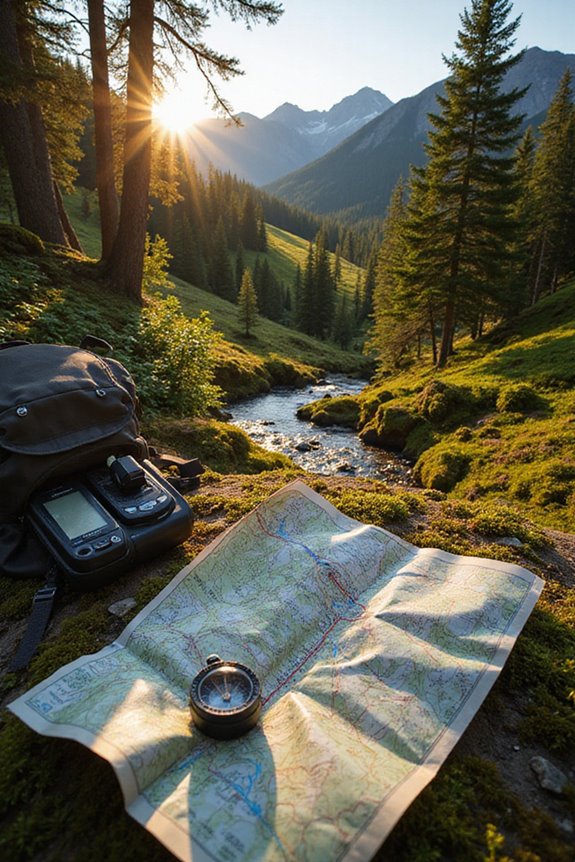
Navigation techniques are like the secret sauce of outdoor survival—once you’ve got them down, the wilderness feels a lot less intimidating. Trust me, mastering map reading is key. I’ve often found myself aligning my map with magnetic north using my trusty compass, and it’s a game changer. Recognizing symbols like contour lines and water bodies helps me visualize what’s ahead. Then there’s compass use; I remember the first time I took a bearing, feeling like a true explorer! Keeping that needle aligned while I trekked through tricky terrain was exhilarating. Plus, using natural landmarks and the sun’s path for direction adds a sprinkle of adventure. With these tools in my survival kit, I’m ready for whatever nature throws my way!
Shelter Building
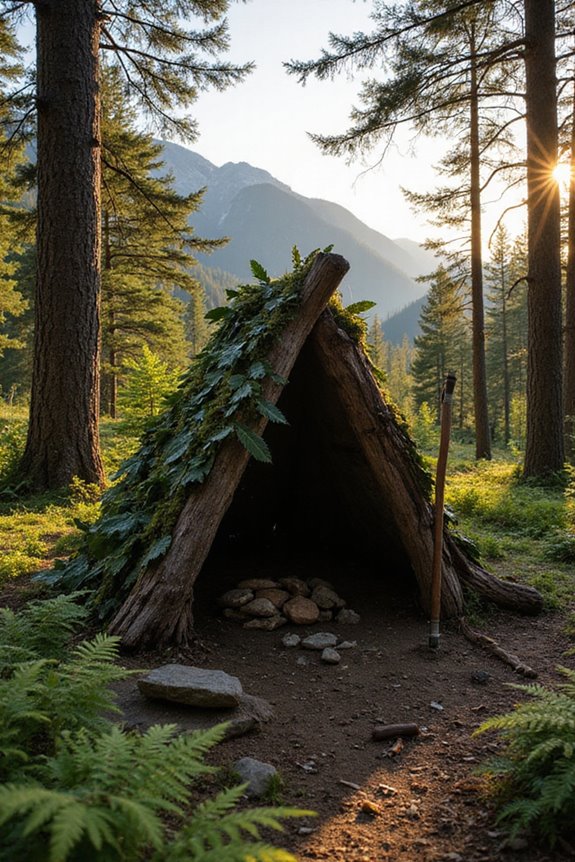
After you’ve got your navigation skills down, the next big thing on the survival checklist is shelter building. Imagine finding a cozy spot, nestled between trees or rocks—nature’s own windbreaks. You’ll want to steer clear of dead trees, though; no one wants an unexpected branch dropping down! I often use downed poles for the framework, tying them together with paracord. Think about it: tarps make great wedge shelters in windy weather, while quinzhees are fantastic in snowy conditions. Just remember to insulate well with leaves or bark and keep ventilation holes open. And hey, don’t forget to build that fire outside! A little warmth goes a long way in keeping the chill at bay while you enjoy your wilderness adventure.
Water Procurement and Purification

If you ever find yourself in a survival situation, the hunt for water can feel like a quest for buried treasure—only, instead of gold, you’re after that precious liquid that keeps us alive! You’ll want to scout for water sources like streams, springs, or even rainwater using a tarp. Trust me, it’s a lifesaver! Bring along a knife to craft collection tools or use hollowed logs to gather water. Now, let’s not forget purification methods; boiling is great, but it takes time and fuel. I always pack purification tablets and a portable filter for peace of mind. And remember, never drink untreated water unless you’re feeling lucky—bacteria don’t make great travel buddies! Stay prepared, and you’ll conquer the thirst!
Fire Making and Signaling
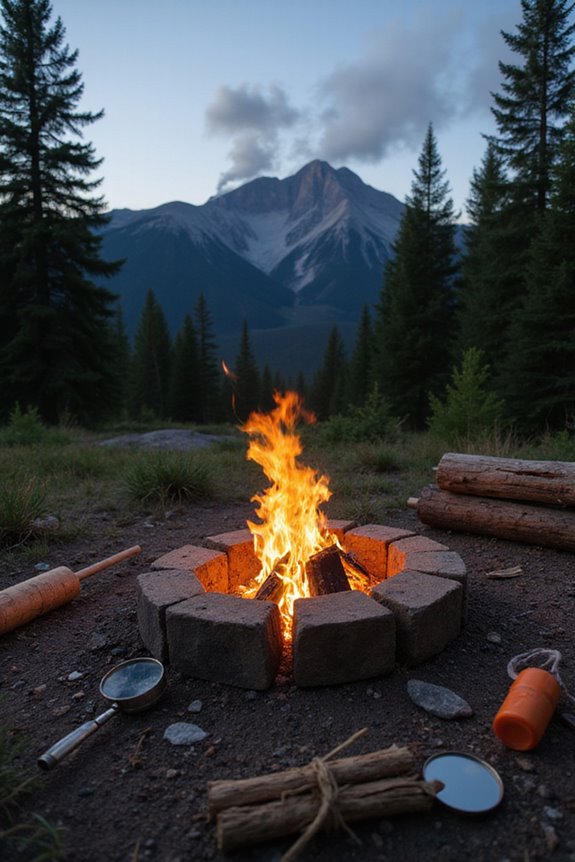
When it comes to survival, fire is like your best friend—it keeps you warm, cooks your food, and can even signal for help when you need it most. One of my favorite ways to start a fire is with a bow drill; it’s efficient and a bit of a workout! You’ve gotta gather your fire materials carefully—tinder, kindling, and firewood—arranging them from smallest to largest. Once you’ve created your ember, transferring it to your tinder is essential; I often use a piece of bark for that. When you’re trying to signal for help, a smoke signal can be a lifesaver, especially with green leaves. Just remember, keep your fire controlled, and it’ll be your ally in the wild!
Food and Wildlife Awareness
Food and wildlife awareness is vital for anyone venturing into the great outdoors, and trust me, it can make or break your survival experience. Before I hit the trails, I always plunge into some wildlife identification—knowing what’s lurking around can save your skin. I’ve learned to spot tracks and scat, which tells me what animals are nearby. Plus, mastering foraging techniques is essential. I’ve found that familiarizing myself with edible plants keeps my energy up; just remember, if you can’t identify it, don’t eat it! When foraging, I take only what I need to keep nature balanced. And, make noise to avoid surprising wildlife—trust me, you don’t want to meet a bear unexpectedly! Respecting nature is key.
First Aid and Emergency Preparedness
Knowing how to handle a medical emergency in the wild can feel like a challenging task, but trust me, it’s one of those skills that could make a huge difference. Imagine you’re out there, someone gets hurt, and you’re the one with the knowledge! First, assess the scene to guarantee it’s safe before rushing in. Then, focus on the ABCs: Airway, Breathing, and Circulation. Your emergency equipment’s got to be well-stocked—think bandages, antiseptics, and maybe some splints for those unexpected injuries. Wound care is essential; clean and dress wounds promptly to prevent infections. And don’t forget to hydrate the injured! Remember, staying calm is key, and your preparedness can turn a dire situation into one that’s manageable.
Frequently Asked Questions
What Mental Strategies Can Help During a Survival Situation?
In a survival situation, I rely on mental resilience and stress management. Staying calm helps me think clearly, while positive self-talk and visualization keep my confidence high, allowing me to adapt and navigate challenges effectively.
How Do I Maintain Morale in Survival Situations?
Oh sure, just think happy thoughts while you’re stranded! Seriously though, fostering team dynamics and embracing positive thinking can keep spirits high. Remember, laughter and support can turn survival into a bonding adventure, not just a struggle!
What Are Common Mistakes to Avoid in Outdoor Survival?
When I think about common mistakes to avoid in outdoor survival, I remember shelter mistakes and food preparation. It’s essential to build a proper shelter and know how to prepare food safely for success.
How Can I Improve My Outdoor Survival Skills Over Time?
I’ve found that consistent practice drills and attending skill workshops really boost my outdoor survival abilities. It’s all about reinforcing techniques and learning from others to adapt and tackle challenges effectively over time.
What Are the Legal Considerations for Foraging and Hunting?
When I consider foraging regulations and hunting licenses, I realize it’s essential to know the specific rules in my area. Ignoring these can lead to hefty fines and legal trouble I definitely want to avoid.

